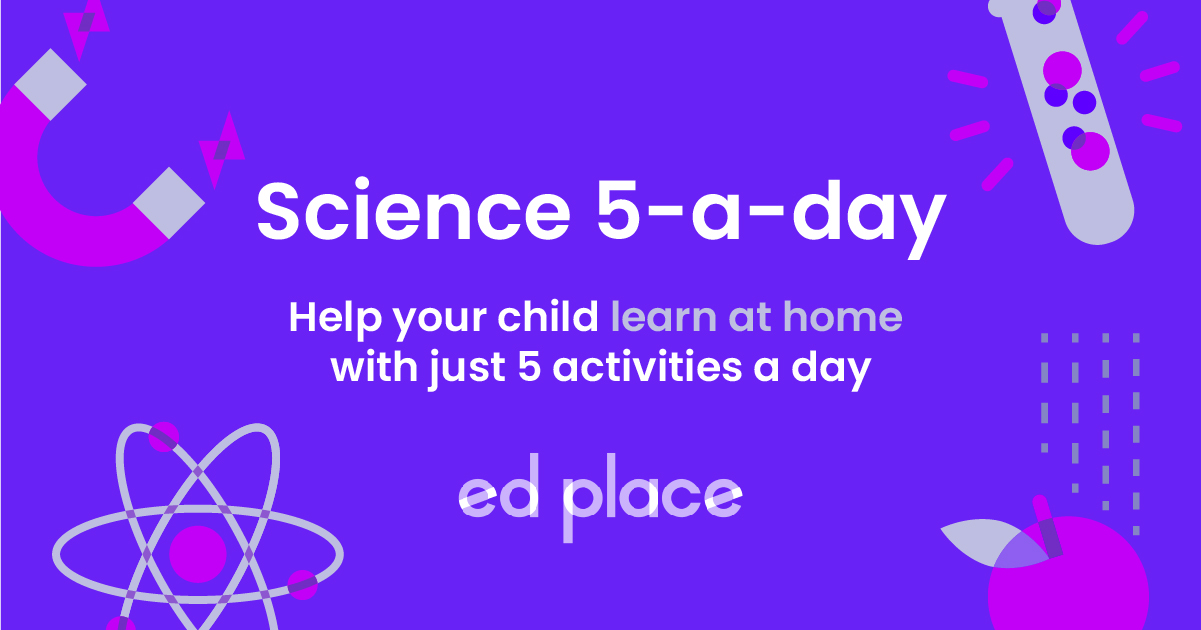
EdPlace's Key Stage 1 Home Learning Science Lesson: Seasonal Changes
Looking for short lessons to keep your child engaged and learning? Our experienced team of teachers have created English, maths and science lessons for the home, so your child can learn no matter where they are. And, as all activities are self-marked, you really can encourage your child to be an independent learner.
Get them started on the lesson below and then jump into our teacher-created activities to practice what they've learnt. We've recommended five to ensure they feel secure in their knowledge - 5-a-day helps keeps the learning loss at bay (or so we think!).
Are they keen to start practising straight away? Head to the bottom of the page to find the activities.
Now...onto the lesson!
Want to Get to Grips with Seasonal Changes and the Weather?
During science lessons, your child will be asked to explain the different seasons we experience and the changes associated with each. They could be asked to explain why the day length is longer or shorter at different times of the year. As a parent, you may be wondering how to explain these concepts in a child-friendly way to your child, who can be a ‘little’ disengaged when working at home.
We're confident that if you follow the step-by-step approach below your child will be able to:
1) Understand the different types of weather and how these can be measured
2) Apply this understanding to describe the apparent changes across the seasons
3) Explain how day length varies across the four seasons
Step 1: Introduce the Seasons
Before we get going, it's crucial to check your child understands the different names for the seasons as we will use them to complete our objective.
Autumn: the season during which the leaves fall off the trees and the amount of time we have in the day becomes less.
Winter: the season where we have the shortest amount of time during the day and the weather is at its coldest.
Spring: the season when young animals like lambs and chicks are born, the flowers bloom and the weather starts to become warmer.
Summer: the season during which the trees are full of green leaves and the weather is at its warmest.
Step 2: Weather Changes
To tackle this lesson, it will help if your child understands the key changes in the weather across the four seasons. Discuss today’s weather and ask your child if that's what they expected to see today for the current season. Discuss what the weather is usually like at this time of year. Does your child expect it to be the same weather tomorrow? Discuss colours that are associated with the seasons and which colours we would use for a summer collage e.g. bright, vibrant colours to represent life and warmth.
Step 3: What Happens in Summer?
Begin with a discussion about the different activities we enjoy during the four seasons of the year. For example, we have more daylight in the summer months, so we can do more activities outside in the evening, like going to the park after school.
Ask your child, ‘which activities would we only do in spring or summer?’ for example, play in the paddling pool, have sports day at school. To further extend this, you could ask your child to draw their favourite activity about each season with labels.
Day Length
Ask your child, 'when will it go dark today?' Draw out that day length varies in different seasons. There is more daylight in the summer, the days are longer, the nights are shorter, and the weather is warmer. The sun sets later in the summer and rises earlier in the morning. In winter there is less daylight, the nights are longer and the weather colder. Highlight that it can even be dark going to school and nearly dark on the way home in the winter. The sun sets earlier in the winter and rises later in the morning.
Clothing
To help your child further understand seasonal changes, ask them what type of clothes they wear during the different seasons.
Step 4: Put Your Knowledge to the Test
Now, see if you can answer these questions about seasonal changes together:
1. Sarah can’t wait for her school sport’s day in July, which season is this?
2. Sunrise changes throughout the year, sometimes it rises earlier than others. When does the sunrise incredibly early?
3. Halloween is on 31st October, which season is this?
4. In the winter, it can be dark coming home from school but in the summer, it's lighter for much longer into the evening. Why is this?
Step 5 - Activity Time!
Great effort covering all of this subject matter together! Now, why not challenge your child by assigning the following 5 activities in this order?
All activities are created by teachers and automatically marked. Plus, with an EdPlace subscription, we can automatically progress your child at a level tailored to their needs. Sending you progress reports along the way so you can track and measure progress, together - brilliant!
Activity 2 - Understand Seasonal and Weather Changes
Activity 3 - Recognise Plants During the Seasons
Activity 4 - Recognise Events During the Seasons
Activity 5 - Identify the Season: Dressing Up or Down?
Answers
1. The sport’s day is happening during the summer season as it is in July. It is a good idea to hold the event then as hopefully, the weather will be sunny and dry!
2. The sunrises incredibly early during the summer months and this also means we have longer days.
3. Halloween happens during the autumn months when the leaves fall off the trees and the days get shorter and the nights get longer.
4. This is because the sun sets much later in the summer.
Keep going! Looking for more activities, different subjects or year groups?
Click the button below to view the EdPlace English, maths, science and 11+ activity library








